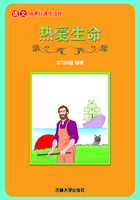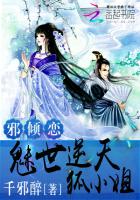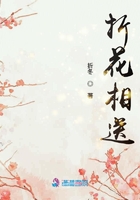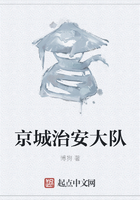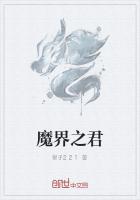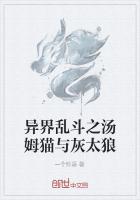The war lasted ten years, during which both sides suffered the misfortunes of war. Agamemnon fought with Achilles over a captive princess, and in anger, Achilles refused to fight. His friend, Patroclus, borrowed his armour and went out to change the situation of war, but was killed by Hector, the eldest son of Priam. Bent on revenge, Achilles no longer fought with Agamemnon, and putting on his new armour made by Hephaestus, went out to avenge his friend. He killed Hector and dragged his dead body three times around the walls of Troy. But soon after, Achilles was wounded in the heel by Paris and died in battle. Paris had not long to live either, for he was killed by a friend of Achilles’. As Achilles left his armour to the bravest of the Greeks, a bitter struggle happened between its two worthy contestants; and when the weapons were given to Odysseus by judge, Ajax took his own life for grief and shame.
At the end of nine years a prophet predicted that Troy would not fall as long as the Palladium stayed within its walls. Odysseus and Diomedes went into the city in disguise and stole it out of the temple of the city. Then the Greeks designed a great wooden horse, in which some Greek soldiers hid themselves, and made believe to withdraw. Taken in by rumour that the horse had been sent by Athena, the overjoyed Trojans hauled it into their capital. At night the hidden Greeks crawled out and threw the whole city into confusion. Tory was robbed. King Priam was killed. Queen Hecuba, her daughter Cassandra and her daughter in law Andromache were all carried into slavery. Helen and Menelaus were on good terms again and disappeared in the west. Agamemnon went back to Mycenae, only to be murdered by his own wife. His son Orestes killed his mother and was pursued by the Furies. Odysseus went through untold hardships, struggling with wind and wave, before he reached his home island Ithaca to reunite with his faithful wife Penelope. Aeneas, one of the Trojan princes, after narrowly escaping death at Troy, wandered from land to land for a long time and became, in the end, the founder of the Roman race.
Vocabulary 词汇
shepherd ["?ep?d] vt. 牧羊,带领,看管;
n. 牧羊人,牧师,指导者
expose [ik"sp?uz] vt. 揭露,揭发,使曝光,显示
royal ["r?i?l] adj. 皇家的,盛大的,高贵的;
n. 王室成员,王室
elope [i"l?up] vi. 私奔,潜逃
prophet ["pr?fit] n. 先知,预言者,提倡者
altar ["?:lt?] n. 祭坛,圣坛,圣餐台
captive ["k?ptiv] adj. 被俘虏的,被迷住的;
n. 俘虏,迷恋者
armour ["ɑ:m?] n. 装甲,护面,盔甲
revenge [ri"vend?] n. 复仇,报复;
vt. 报复,替……报仇,洗雪;
vi. 报仇,雪耻
palladium [p?"leidi?m] n. [化]钯,守护神
withdraw [wie"dr?:] vt. 撤消,收回,拉开;
vi. 撤退,离开
Practice
1.Who actually started the Trojan War?
2.Read more about The Trojan horse.
译文
在新婚宴会上,不和女神厄里斯抛出一只写有“献给最美丽的人”字样的金苹果。赫拉、阿芙罗狄蒂和雅典娜都希望得到这只金苹果。她们被送到帕里斯那里以作出裁决。帕里斯是爱达山上的一个牧羊人,他把金苹果判给了阿芙罗狄蒂,因为她答应帮他得到世上最美丽女子的爱。
帕里斯是特洛伊国王皮安姆的儿子。他出生时,他的母亲赫尔犹巴王后梦到自己手握一根燃木,因此,人们认为帕里斯很可能会给城市带来毁灭。一个很偶然的机会,他被遗弃在爱达山上,在那经受了风吹、雨淋和日晒。后来,他被那里的牧民救了下来并抚养成人。这次,在阿芙罗狄蒂的授意下,他下山参加在特洛伊城举办的集会。在那里,他是如此的出众,国王皮安姆和王后赫尔犹巴兴高采烈地接纳了他,他重新成为王室家族的一员。
不久,他被任命为船队首领,并被派往希腊。他来到斯巴达,因为阿芙罗狄蒂曾经告诉他,当时最美的女子——海伦就住在那儿。海伦的丈夫,墨涅劳斯国王热情地款待了帕里斯,但他却恩将仇报。趁着国王不在,帕里斯说服海伦与他一起私奔到特洛伊城。为了报仇雪恨,希腊人民拿起了武器,特洛伊战争爆发了。
当希腊舰队停驻在奥利斯海港时,风向一直不顺。一位先知告诉远征军的统帅阿伽门农,让他牺牲自己的女儿伊菲革涅亚,把她献给阿耳特弥斯。伊菲革涅亚被摆到了女神祭坛上。但是阿耳特弥斯在最后关头将她带走了,并将一只鹿放到她的位置上。阿伽门农的妻子克吕泰涅斯特拉对丈夫的残忍深感愤怒。
战争持续了十年。在这段时间里,双方损失惨重。阿伽门农与阿基里斯争夺一位俘获的公主。暴怒之下,阿基里斯拒绝继续参战。阿基里斯的朋友,普特洛克勒斯借走了他的盔甲以扭转战局。很不幸,他死在了皮安姆的大儿子海克特的手下。阿基里斯一心一意要为朋友报仇,他不再与阿伽门农斗气。披上赫斐斯塔司为他赶制的新盔甲,他出征了。他杀死了海克特,拖着尸体绕特洛伊城跑了三圈。但很快,阿基里斯又被帕里斯射中了脚跟,死在战场上。帕里斯也没活多久,他又被阿基里斯的朋友杀死了。由于阿基里斯遗言要把他的盔甲送给希腊最勇敢的战士,在两位得此称号的勇士间展开了激烈的争夺。当盔甲最后判定应奖给奥德修斯时,另一位勇士埃杰克斯郁郁寡欢,羞愧万分地结束了他的生命。
当仗打到第九年年底的时候,一位先知预言,只要城里的雅典娜神像在,特洛伊城就永远不会被攻陷。于是,奥德修斯就和狄俄墨得斯伪装入城,偷偷地将神像盗了出来。随后,希腊人精心制作了一匹庞大的木马,一些希腊士兵藏进了马腹。与此同时,希腊军队假装撤兵,并散布谣言:这匹马是雅典娜送来的。信以为真的特洛伊人欢天喜地地将马拖进城里。夜幕降临,隐藏的希腊士兵们蹑手蹑脚地从马肚里钻出来,使整个城市陷入一片混乱之中,特洛伊城被洗劫一空。国王皮安姆被杀,赫克犹巴王后,她的女儿卡珊德拉及儿媳安德洛玛切都被充作了奴隶。海伦和墨涅劳斯重归于好,到西方隐居了起来。阿伽门农返回迈锡尼,却不幸遭到自己妻子的谋杀。他的儿子杀死了自己的母亲,又被愤怒女神追捕。奥德修斯历尽艰难险阻,与大风大浪搏击着,直到他最终到达伊塞沙,与忠实的妻子珀涅罗珀团聚在一起。特洛伊城的一位王子埃厄安斯幸免于难。很长一段时间,他从一个国家流浪到另一个国家。最后,他创建了罗马民族。
练习
1.是谁挑起的特洛伊战争?
2.阅读更多关于特洛伊木马的故事。
03 The Ruin of Roman Empire 罗马帝国的灭亡
To match the environmental record with the historical one, researchers looked at more than 7,200 tree fossils from the past 2,500 years.
The study, published in the journal Science, said: “The rise and fall of past civilizations have been associated with environmental change, mainly due to effects on water supply and agricultural productivity, human health and civil conflict.
“Wet and warm summers occurred during periods of Roman and Medieval prosperity.
“Increased climate variability from AD 250 to 600 coincided with the demise of the Western Roman Empire and the turmoil of the Migration Period.
“Distinct drying in the third century paralleled a period of serious crisis in the western Roman Empire marked by barbarian invasion, political turmoil and economic dislocation in several provinces in Gaul.”
Oak rings are sensitive to changes in precipitation, and can show changes according to what was happening in the environment.
The research could also glean signs about what was happening from changes in how many trees were being cut.
The study said: ‘Reduced tree harvesting around AD 250 to 400 coincides with the biggest central Europe historical crisis, the Migration Period, a time marked by lasting political turmoil, cultural change and socio-economic instability.
Increasing timber harvest for construction is represented by abundant felling parallel to socio-economic consolidation from the sixth to the ninth centuries.
The scientists said unfavorable climate may have contributed to the spread of the second plague pandemic, the Black Death, which reduced central Europe’s population after AD 1347 by 40 to 60 percent.
Researchers also noted that a sharp decline in North American temperatures around the same time saw an abrupt desertion of former Greenland settlements.
Technological advances have made the modern human population less vulnerable to environmental changes to a certain extent, the study said.




